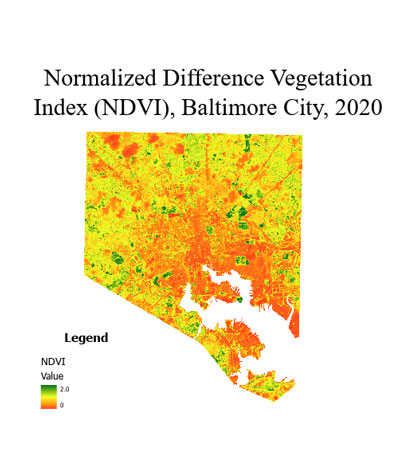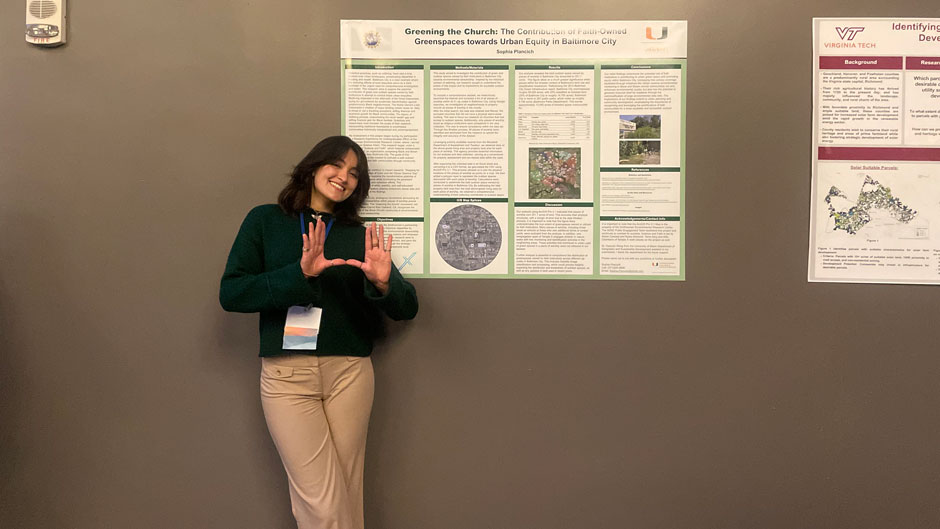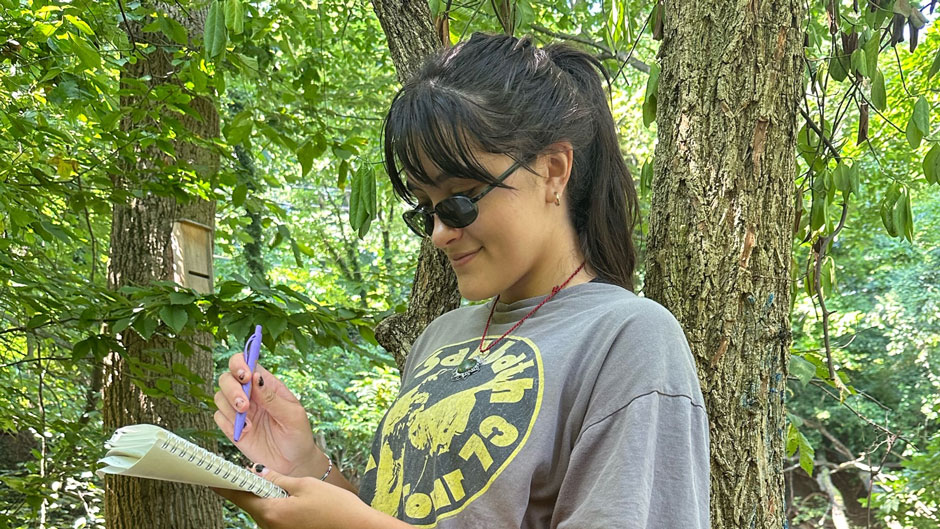Research has shown that access to parks and other green outdoor areas has a positive impact on health and quality of life. But in many cities, including Baltimore City, Maryland, residents of predominantly low-income and minority neighborhoods don’t have equal access to green space due in part to a history of housing discrimination.
That’s why Sophia Plancich, a senior at the University of Miami College of Arts and Sciences, is spending her summer poring over satellite images of Baltimore City. Using a geographic information system (GIS), a computer system that analyzes data attached to a specific location, such as an address or zip code, she is tracking changes in the city’s green space and development over a 40-year period.
“I’m really interested in environmental justice,” said Plancich, who is double majoring in geography and sustainable development and ecosystem science and policy. “I’m passionate about integrating earth sciences with social sciences to better understand urban areas as they adapt to environmental changes, as well as integrating technologies to assess socioeconomic inequalities in urban areas.”
Plancich’s current project builds on research she conducted last summer when she interned in Baltimore City through the Smithsonian Environmental Research Center. This program provides students with opportunities to conduct independent research on environmental issues.

During her internship, Plancich used GIS to study the role of faith-based institutions, such as churches, in providing residents with access to green space. By analyzing records from the Maryland Department of Assessments and Taxation, Plancich determined that faith-based institutions owned a total of roughly 250 acres of outdoor space in Baltimore City.
Her findings, which have implications for urban planning and community development, show the important role faith-based institutions can play in providing their communities with access to green space.
Plancich also helped faith-based institutions utilize their outdoor space to engage local communities in environmental stewardship. During her internship, she facilitated environmental education activities for children at a local church, teaching them to test water quality, check temperatures in different areas, and collect other types of environmental monitoring data.
“I’m into environmental education and helping children develop an appreciation for the environment early on,” Plancich said.
By the end of last summer, Plancich had learned a lot about Baltimore City and environmental education, but she still had some unanswered questions about the city’s green space. Luckily, after Plancich presented her findings at a GIS conference at the University in November, the College of Arts and Sciences’ Development Office helped her to secure funding through the Beyond the Book scholarship program to continue her research. This financial support, which was made possible by a grant from the Newton & Rochelle Becker Charitable Trust, has enabled Plancich to further study Baltimore City’s green space this summer.
Plancich also shared her findings at the Southern Regional Science Association (SRSA) conference in April, where she was one of only five undergraduates selected to present research.
“This is one of the flagship conferences in the field,” said Haoluan Wang, an assistant professor in the Department of Geography and Sustainable Development who nominated Plancich’s work. “It is quite an accomplishment for an undergraduate student to attend and present work at the conference.”

Since much of her research this summer involves satellite images, Plancich is mainly working from the University’s Coral Gables campus under the guidance of Shouraseni Sen Roy, a professor in the Department of Geography and Sustainable Development. In August, however, she will travel back to Baltimore City to present her research to the church leaders and community members she met last summer.
Plancich said she is grateful for the research opportunities she has had both at the University and through the Smithsonian Environmental Research Center. In addition to collaborating with Sen Roy, Plancich has worked as a research assistant for Wang.
“The connections I’ve been able to create with my professors, especially in the geography department, have been impactful for me career-wise and education-wise,” Plancich said.
After she graduates in December, Plancich hopes to earn a master’s degree in public policy or environmental science. She would like to continue her community engagement work while also finding new opportunities to use her GIS skills.

